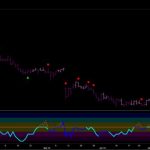Nickel Price Update: Q2 2024 in Review
Nickel, a vital industrial metal, has been subject to notable price fluctuations in the second quarter of 2024. The dynamic nature of the nickel market is influenced by various factors, including supply and demand dynamics, global economic conditions, geopolitical events, and market speculation. In this quarterly review, we delve into the key trends that have shaped the nickel price movements and provide insights into what the future may hold for this crucial metal.
The Rise and Fall: Price Volatility in Q2
The second quarter of 2024 witnessed significant volatility in nickel prices, with sharp fluctuations observed throughout the period. The quarter began on a positive note as robust demand from the stainless steel sector, driven by a resurgence in infrastructure projects and manufacturing activities, buoyed nickel prices. However, concerns about oversupply and slowing demand growth in key markets led to a downturn in prices mid-quarter.
Geopolitical tensions also played a role in shaping nickel price movements. Escalating trade disputes between major nickel-producing countries raised concerns about potential disruptions to supply chains, leading to speculative trading and further price volatility. Additionally, environmental regulations and sustainability goals in the mining industry added to the uncertainty surrounding future nickel production, impacting market sentiment and prices.
Supply and Demand Dynamics: The Balancing Act
The balance between nickel supply and demand remained a crucial factor in determining price trends during the second quarter of 2024. On the supply side, production disruptions in some key nickel-producing regions, coupled with maintenance shutdowns at major mines, exerted upward pressure on prices. However, the easing of these supply constraints towards the end of the quarter alleviated some of the price pressures.
Demand for nickel, particularly from the electric vehicle (EV) and battery sectors, continued to show resilience despite market challenges. The transition towards cleaner energy sources and the electrification of transportation drove sustained demand for nickel in battery production. Moreover, increased adoption of nickel-rich cathode chemistries in lithium-ion batteries supported a positive outlook for nickel demand in the long term.
Market Outlook and Future Prospects
Looking ahead, the outlook for nickel prices remains influenced by a confluence of factors that will shape market dynamics in the coming quarters. The ongoing global economic recovery, infrastructure investments, and technological advancements in the EV sector are expected to sustain demand for nickel, providing a positive underpinning for prices. However, geopolitical uncertainties, supply chain disruptions, and regulatory changes pose risks to market stability.
In conclusion, the second quarter of 2024 presented a mix of challenges and opportunities for the nickel market, reflecting the inherent volatility and complexity of the metal’s price movements. Navigating these dynamics requires a nuanced understanding of the interplay between supply, demand, and external factors shaping the nickel landscape. As investors, industry stakeholders, and policymakers continue to monitor developments in the nickel market, adapting to changing conditions and leveraging emerging trends will be key to capitalizing on the evolving opportunities in this vital industrial metal.



